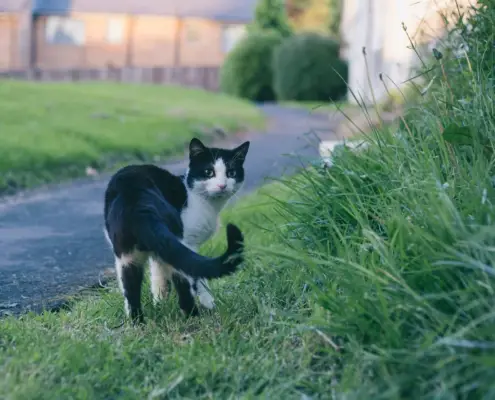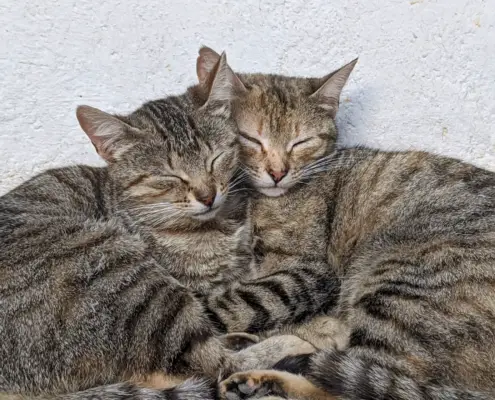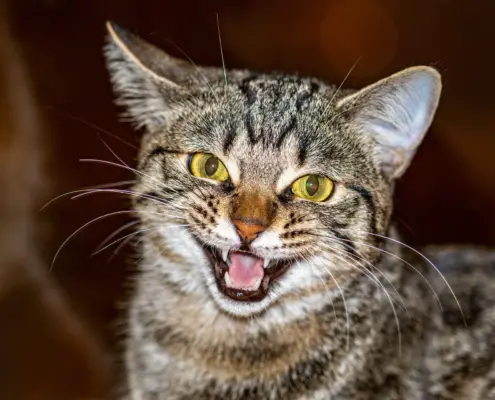
Feline fertility is an intriguing subject that cat owners often wonder about. Understanding the reproductive cycle of cats and when they stop reproducing is essential for responsible pet ownership. Cats, like many other animals, have a specific lifespan for their fertility. In this article, we will explore the lifespan of feline fertility and discuss the factors that can affect it.
The reproductive cycle of cats
To understand when cats stop reproducing, it is essential to know how their reproductive cycle works. Female cats, also known as queens, have an estrous cycle, commonly referred to as “going into heat.” This cycle consists of four stages: proestrus, estrus, metestrus, and diestrus.
During proestrus, the queen exhibits behavioral changes, such as increased affection and restlessness. This stage typically lasts for one to two days. It is followed by estrus, where the queen becomes receptive to mating. During this phase, she may vocalize more, roll on the ground, and assume a mating position. Estrus can last anywhere from three to fourteen days.
If mating occurs, the queen enters metestrus, where she may become less receptive to further mating attempts. Finally, during diestrus, the queen either becomes pregnant or experiences a pseudo-pregnancy. If she is not pregnant, the cycle repeats after a period of rest.
When do cats reach sexual maturity?
Cats reach sexual maturity at different ages depending on various factors, including breed, genetics, and environment. On average, female cats reach sexual maturity between five and ten months of age. Male cats, known as toms, may reach sexual maturity slightly later, usually around six to eight months of age.
It is crucial to note that early spaying and neutering can alter the timing of sexual maturity in cats. These procedures, typically performed between eight weeks and six months of age, prevent unwanted litters and offer several health benefits.
How often do cats go into heat?
Cats are known for their ability to reproduce rapidly, and their frequency of going into heat plays a significant role in this. Female cats can go into heat multiple times throughout the year. The exact frequency varies, but it typically occurs every two to three weeks during the breeding season, which generally runs from spring to fall.
It is important to keep unspayed female cats indoors or closely supervised during their heat cycles to prevent unwanted pregnancies. Male cats can become overly aggressive and fight each other to gain access to a female in heat. Additionally, uncontrolled breeding can contribute to the already large population of stray and feral cats.
The average age for cats to stop reproducing
Cats, like humans, have a limited reproductive lifespan. While there is significant variation, most cats stop reproducing between the ages of seven and ten. However, some cats may continue to have litters until they are twelve years old or even older.
It is worth noting that the age at which cats stop reproducing can be influenced by several factors. These factors include breed, overall health, and previous litter size. Additionally, cats that have been spayed or neutered will naturally cease to reproduce.
Factors that can affect a cat’s fertility
Several factors can affect a cat’s fertility and influence when they stop reproducing. One such factor is genetics. Some cat breeds are known for having shorter reproductive lifespans, while others may continue to reproduce well into their senior years.
The overall health and well-being of a cat also play a crucial role in their fertility. Cats that receive proper nutrition, regular veterinary care, and a stress-free environment are more likely to have a longer reproductive lifespan. On the other hand, cats with underlying health conditions or those exposed to environmental toxins may experience a decline in fertility at an earlier age.
Signs that a cat may be reaching the end of their reproductive years
As cats approach the end of their reproductive years, they may exhibit certain signs that indicate a decline in fertility. These signs can include a decrease in the frequency or intensity of heat cycles, a decrease in the number of kittens born per litter, and a longer interval between litters.
Additionally, older cats may experience age-related changes that affect their ability to conceive and carry a litter to term. These changes can include decreased hormone production and an increased risk of pregnancy complications. If you suspect that your cat may be reaching the end of their reproductive years, it is best to consult with a veterinarian for a proper assessment.
Health considerations for older cats
As cats age, their overall health needs change, and this includes their reproductive health. Older cats may be more prone to certain health conditions that can affect their fertility, such as uterine infections or hormonal imbalances.
Regular veterinary check-ups and preventive care become even more important for older cats. Your veterinarian can provide guidance on maintaining your cat’s reproductive health as they age and offer recommendations for managing any age-related health concerns.
Spaying and neutering: the importance of preventing unwanted litters
To prevent unwanted litters and contribute to population control efforts, spaying and neutering cats are crucial. Spaying involves the removal of the female cat’s ovaries and uterus, while neutering involves the removal of the male cat’s testicles.
Spaying and neutering not only prevent unwanted pregnancies but also offer several health benefits to cats. Spayed female cats have a significantly reduced risk of developing uterine infections and certain types of cancer. Neutered male cats are less likely to roam, fight with other cats, and develop testicular cancer.
It is important to note that these procedures can be safely performed at any age, but early spaying and neutering, before the first heat cycle, are recommended to maximize the health benefits.
Understanding the lifespan of feline fertility
In conclusion, cats have a specific lifespan for their fertility, and understanding when they stop reproducing is essential for responsible pet ownership. Female cats reach sexual maturity between five and ten months of age, and their frequency of going into heat varies but generally occurs every two to three weeks during the breeding season.
Most cats stop reproducing between the ages of seven and ten, although some may continue to have litters until they are twelve years old or older. Factors such as genetics, overall health, and previous litter size can influence a cat’s fertility. Signs that a cat may be reaching the end of their reproductive years include a decrease in heat cycles and a decrease in litter size.
To prevent unwanted litters and contribute to population control efforts, spaying and neutering cats are crucial. These procedures offer several health benefits and can be safely performed at any age, but early spaying and neutering is recommended.
Understanding the lifespan of feline fertility allows cat owners to make informed decisions about their pet’s reproductive health and contribute to the overall well-being of cats everywhere.
If you enjoyed my article, I would appreciate you sharing it with your network.

Sima Ndlebe
Sima writes for CatBuzz. He is interested in Cats, Health and Fitness, and Entrepreneurship.
Published: 30 October 2023



